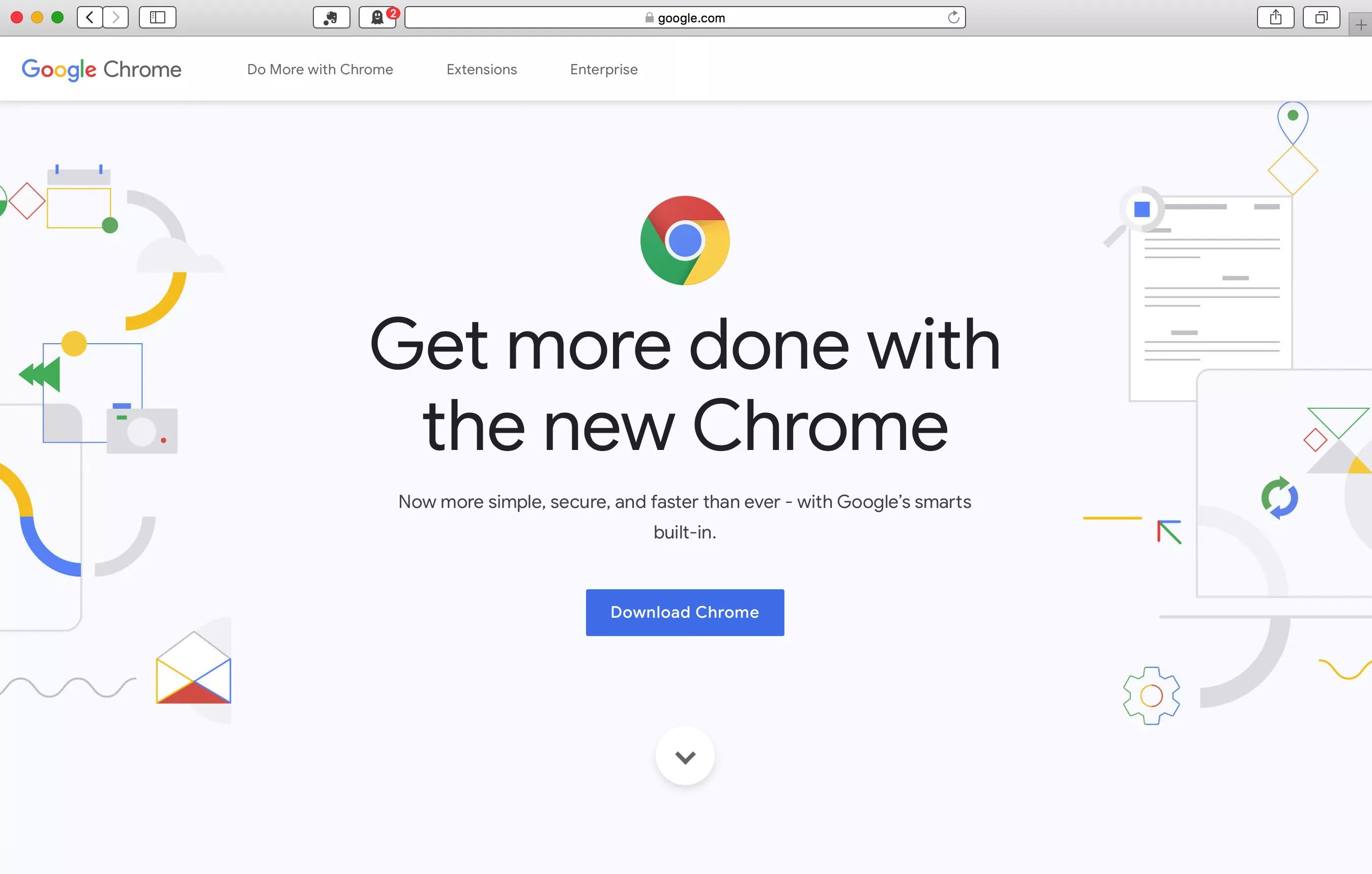- Google Chrome Shortcut On Desktop Mac
- Google Chrome Remote Desktop Mac
- How To Install Google Chrome On Mac Desktop
- Google Chrome
Google Chrome can be one of the most popular browsers all over the world. Why some people want to uninstall Chrome? Here're common reasons for removing Google Chrome from your Mac computer.
They are: Uninstall and reinstall Google Chrome on Mac to get the certain version; Google Chrome keeps crashing, freezing or not working; Clean up unused apps and remove clutter on Mac; Switch to a new browser; Test an app to see whether it is compatible with Google Chrome or not; Revert to the default settings by uninstalling and reinstalling Chrome on Mac.
Whatever, you can completely uninstall Google Chrome on Mac step by step here.

- Part 1: How to Uninstall Google Chrome and Remove Profile Information on Mac
- Part 2: How to Completely Uninstall Google Chrome on Mac in One Click
Get more done with the new Google Chrome. A more simple, secure, and faster web browser than ever, with Google’s smarts built-in. Google Chrome eats RAM like there’s no tomorrow, so if your Mac computer is low on RAM, then that could be the issue why Chrome keeps crashing. If your Mac is good enough and still unable to run Chrome properly, then the problem is with the browser. I’ve listed some of the most common solutions below. Quick Access: Clear Chrome Browsing. Jun 08, 2019 How to add a Google Chrome icon to your Mac desktop. Once you’re sure you have Google Chrome installed, follow the steps below: 1. Go to your desktop and open “Finder.” Close any other open. Google Chrome Create Shortcut on Taskbar. To create a shortcut on your Taskbar, you first have to follow the desktop shortcut section. Once done, follow the method provided below: Select the desktop shortcut; Drag it over the Taskbar of the Windows/Mac; Read More: How to Clear Cache in Google Chrome, Safari, and Firefox. Google Chrome Create.
Part 1: How to Uninstall Google Chrome and Remove Profile Information on Mac
If you want to completely remove Chrome from Mac, uninstalling the Chrome app is not enough. You need to delete the profile information of Google Chrome on Mac too. After that, you can free up a lot of storage space on Mac.
How to Uninstall Chrome on Mac
How to Delete Related Files after Uninstalling Chrome on Mac
If you want to completely uninstall Google Chrome in Windows 7/8/10/XP, Linux, iPhone or Android, you should also delete Google Chrome bookmarks and history manually. It is an important step when you uninstall apps.
Part 2: How to Completely Uninstall Google Chrome on Mac in One Click
What if you can't uninstall Chrome on Mac? If you are looking for a powerful Chrome uninstall tool, you can take a look at Aiseesoft Mac Cleaner. You can uninstall Chrome and clean up Chrome data on Mac in one stop. The built-in app uninstaller can help you remove related logs and document in one click. You can find that there is much storage space after uninstalling Chrome via Mac Cleaner.
Main Features of the Mac Uninstaller
1. Uninstall any unwanted app on Mac and delete the associated files on Mac.
2. Clean up Chrome data, like search history, downloads, cookies and all related files thoroughly.
3. Remove all junk files on Mac, including invisible or inaccessible files.
4. Reduce Mac clutter by deleting old versions of apps.
5. Remove large files and folders by file size or date.
6. Get built-in duplicate finder, similar image finder, shredder, system performance monitor and more.
7. Work with iMac, iMac Pro, MacBook, MacBook Air and MacBook Pro running macOS Big Sur and macOS Catalina, macOS 10.14, 10.13, 10.12, 10.11.
How to Uninstall Google Chrome Completely from Your Mac Computer
Free download, install and launch the Mac app uninstaller. If you want to check the system status of your Mac computer, you can click 'Status' to know more about the performance of CPU, memory and disk.
Click 'Toolkit' to access more cleanup tools. Choose 'Uninstall' to find the app uninstaller. You can easily uninstall Google Chrome and all associated files on Mac completely.
Click 'Scan' to figure out how many apps installed on your Mac computer. It takes less than half minute to complete the scanning process. Later, click 'View' to check out.
Scroll down to find 'Google Chrome' in the left pane. You can see the total file size of all Google Chrome data. Mark before 'Google Chrome' to get all related files.
Check and select which file you want to delete. If you want to completely remove Chrome from Mac, you can click 'Select All' on the top. Then click 'Clean' on the lower right corner. Confirm the Chrome uninstallation in the popping-up dialog by choosing 'Confirm'.
You can uninstall Chrome app on Mac via the traditional way or third-party tool. For Mac users, Aiseesoft Mac Cleaner is your comprehensive Mac uninstaller, cleaner and manager. You can keep your Mac tidy via the powerful functions. Of course, you can also delete Google Chrome browsing history, cookies and extensions on Mac instead of uninstalling. If you want to uninstall Google Chrome on Android and iPhone, you should not forget to delete related Chrome files to free up more storage space.
What do you think of this post?
Excellent
Rating: 4.8 / 5 (based on 165 votes)Follow Us on
- Root Uninstaller – System App Remover and App Disabler
What is Root Uninstaller? How to use this tool to uninstall or disable system apps? Where to download this APK? Get all the answers from this post.
- Chrome Screen Recorder - How to Record Streaming Video/Audio on Chrome
Want to record streaming video on Chrome? Don't know which Chrome video recorder or Chrome audio recorder you should choose? This post shows you the best Chrome screen recorder to help you any activity from Chrome browser.
- Video DownloadHelper for Chrome Review and Alternatives
What is Video DownloadHelper for Chrome review? Video DownloadHelper for Chrome not working? Read its reviews and get alternatives to download online (YouTube) ideos here.
Safari and Google Chrome compete closely for the top spot on the Macs. While Safari comes built-in with macOS, the Chrome enjoys a significant market share across platforms. Apple has upped the ante with new Safari refresh in terms of looks and performance with the new macOS Big Sur update. To catch up, even Google pushed a massive performance upgrade to Chrome, one of the biggest in years, recently. That does makes us revisit the classic dilemma of picking a browser for Mac - Chrome or Safari? So we decided to compare the respective refreshes in this post.
We will compare both the browsers on grounds of their interface, features, themes, news integration, extensions, password management, and more. Let’s start with cross-platform availability.
Also on Guiding Tech
Safari vs Chrome: Which Browser Works Best on iPadOS
 Read More
Read MoreCross-Platform Availability
As its case with every Apple software, the Safari browser is only available on iOS, iPadOS, and macOS. While in Chrome’s case, you can access the browser everywhere. It’s available on iOS, Android, macOS, iPadOS, Windows, and Chrome OS.
Download Google Chrome for MacUser Interface
Safari received a much-needed design makeover with the macOS Big Sur update. For starters, you can easily change the background wallpaper on the Safari homepage. You can select a custom wallpaper from your Mac a well.
As for customization, you can choose to keep favorites, privacy reports, Siri suggestions, a reading list, and more on the homepage. The tabs also got a nice visual touch. When you hover the cursor on a tab, it will showcase the live preview of the webpage.
The extensions (more on that later), history, reading list, and share menu sit at the top. You can make the best of those features by mastering keyboard shortcuts for quickly accessing and navigating the options. If you love the dark theme, it also supports the system-wide dark theme introduced with macOS Mojave.
Google Chrome continues to stick with material interface design guidelines. You will notice rounded corners and a lot of whites all over the place. That said, you can change the default theme by picking a new one from the Chrome Theme Store and browsing through hundreds of ready-to-go themes available.

Features
It's understandable if you demand your favorite browser to offer different functions than just loading pages faster. Safari offers a clean looking reading mode that strips away the unnecessary elements from a webpage such as ads, social integration, and comments.
You can customize it by changing the font style, size, and background color of the reading mode.
Safari enjoys a seamless integration between iOS and macOS. Tap on the tab switcher, and the browser shows the tab opened on your iPhone. Similarly, when browsing on iOS, the handoff function will let you carry-forward the same webpage on macOS.
You can also use the default Spotlight Search (Command + Space shortcut) and start typing the webpage name, and it will show the suggestions from the Safari history. I use it frequently to visit a webpage without opening the browser. The functionality is not available for third-party browsers.
Google Chrome also offers a syncing capability, but it’s hidden in the Options menu. Go to History > Synced Tabs, and that's where you will see the opened Chrome tabs on iPhone or Android. Yes, it works with Android too.
Unfortunately, Google Chrome doesn’t offer any native Reading Mode. My favorite Google Chrome function is group tabs. You can create multiple groups based on a specific topic and arrange tabs. It’s really helpful when you are researching multiple websites at a time with dozens of tabs open.
Also on Guiding Tech
Top 5 Extension Managers for Google Chrome
Read MoreExtensions
In terms of extension support, Safari falls behind Chrome. The extension list is limited, but it gets the basic extensions to get things rolling. That said, you will have a hard time searching for an extension for every need. Go to Safari > Safari Extensions and install it from the list.

You can manage them by going into Preferences > Extensions and integrate them into your browser experience.
Google Chrome offers a rich collection neatly categorized into different sections. There is an extension for every use scenario.
Web Compatibility
Google Chrome uses the Chromium web engine to load webpages. It’s a universal standard used by most browsers such as Microsoft Edge, Brave, and Opera. You won’t have any issues loading and browsing webpages.
Safari uses the Webkit engine for rendering and loading webpages. The experience was mostly seamless on both browsers. That said, I did face some hurdles with a couple of websites where the provider asked me to switch to a chromium-browser.
Password Management
Flawless password management is a key aspect and also a necessity for a dependable browser experience. Safari stores all the credentials into the iCloud keychain by default. The next time you try to login to an account, use the login info from the iCloud keychain or tap on the Touch ID to auto-fill details.
Chrome offers Chrome Password management to save and store every login detail. It’s not full-featured password management but has enough functions to get the job done. As a bonus, the service is also available on Chrome Android and iOS.
Privacy
Safari offers a detailed privacy reports suggesting which trackers the browser blocked from the websites you visited. You will be surprised to check how many trackers the browser has blocked in the report at the end of the day.
Google Chrome doesn’t offer any data to analyze. But as I mentioned above, you can always opt for an extension to get the job done for you.
Also on Guiding Tech
Google Chrome Shortcut On Desktop Mac
#safari
Click here to see our safari articles pageGoogle Chrome Remote Desktop Mac
Convenience or Features
Those were some key differences between the new Safari and Google Chrome on the Mac. The macOS Big Sur update places Apple’s Safari browser right up there with market leaders like Google Chrome and Firefox. In some areas like customization and privacy, it even beats Google Chrome. Google fights back with multi-platform availability, rich extension support, and flawless performance. ou have to take the call between broader platform availability or sheer convenience at the end of the day.
Next up:Microsoft Edge is another strong contender to replace Safari on Mac. Read the comparison post below to find more details.
How To Install Google Chrome On Mac Desktop
Google Chrome
The above article may contain affiliate links which help support Guiding Tech. However, it does not affect our editorial integrity. The content remains unbiased and authentic.Read Next
Top 7 Ways to Fix Google Chrome White Screen Error on Windows 10
Are you facing a white
